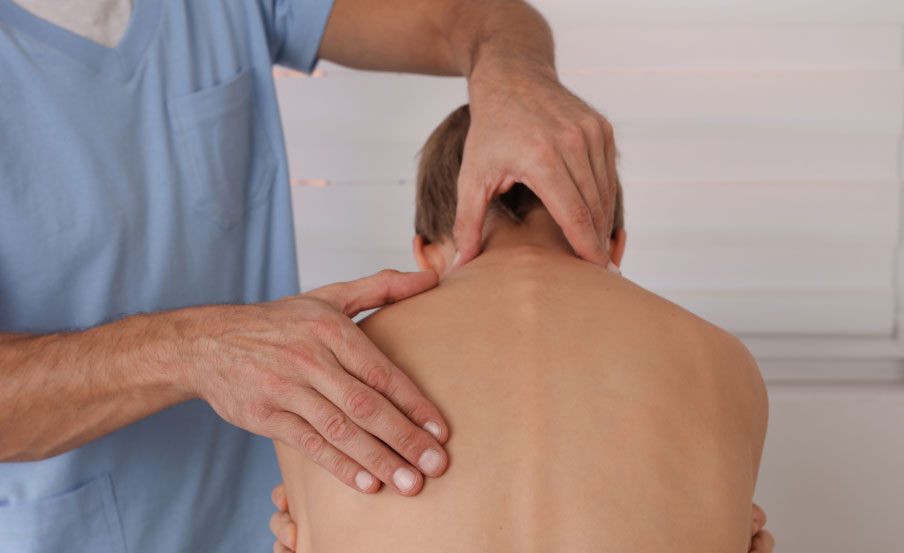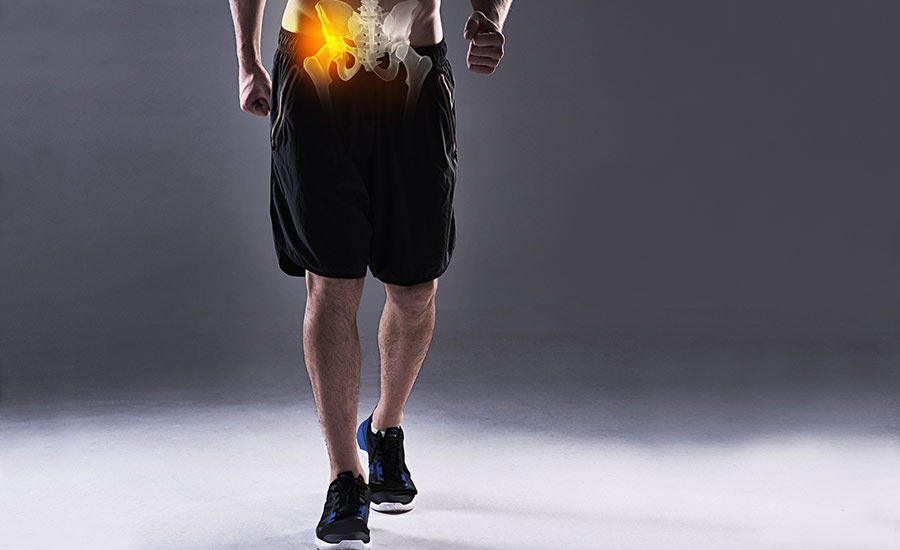
Pediatric Orthopedic Spine Surgeons

Get to Know Our Pediatric Spine Specialists
Find a Specialist Near You
Get the care you deserve close to home at one of our New Jersey or New York Locations.
About Pediatric Spine Procedures

What Conditions Do Pediatric Spine Specialists Treat?
Our pediatric spine specialists at OrthoEast are trained to diagnose and treat a wide range of conditions that affect the spinal column in children.
These conditions can be congenital (present at birth) or acquired later in life, and they can cause a variety of symptoms, such as pain, difficulty with mobility, or respiratory problems.
At OrthoEast, some of the conditions our pediatric spine specialists are trained to treat include:
- Scoliosis
- Spondylosis
- Spondylolisthesis
- Spinal stenosis
- Herniated or ruptured disc
- Disc inflammation
- Spine infections
- Spine tumors
- Spine fractures
- Juvenile rheumatoid arthritis
Sometimes, an early and accurate diagnosis is all it takes to prevent spine surgery. Our team will conduct a comprehensive review of your child’s medical history during the consultation and inquire about family history. Both of these steps are crucial, as some conditions can be hereditary.
Our team of pediatric spine specialists include Dr. Arash Emami, Dr. Ki S. Hwang, Dr. Kumar G. Sinha and Dr. Nikhil Sahai. Our surgeons and specialists have a proven track record of achieving exceptional results to help alleviate pain in children and enhance their overall well-being.
If you are unsure whether surgical or nonsurgical treatment options are right for your child, we encourage you to schedule a consultation with our board-certified physicians.
How Do Pediatric Spine Specialists Diagnose Conditions?
Our team conducts various diagnostic tests to identify spinal conditions in children.
These tests are tailored to your child’s specific symptoms and suspected condition and may include physical examinations or medical history assessments.
In addition, we offer:
- Diagnostic imaging such as MRI to detect bone, tissue, nerve root or other underlying factors contributing to the condition
- X-rays to identify fractures, disc displacement, or vertebrae issues
- Bone scans to detect inflammation, infections, or tumors, and CT scans to visualize complex spinal disorders in 3D imaging
- Lab tests (particularly, blood tests) to detect the presence of infection or inflammation
How Is Pediatric Spine Surgery Performed?
Typically, pediatric spine surgery is performed under general anesthesia, during which an incision is made in the back to access the spine.
We use specialized instruments and innovative methods to address the spinal issue at hand, whether removing bone or tissue, realigning the spine, inserting hardware like rods or screws, or performing a spinal fusion to stabilize the spine.
In some cases, we will use minimally invasive techniques, which involve smaller incisions and the use of specialized tools to access the spine. This approach can result in less pain, scarring, and a shorter recovery time compared to traditional open surgery.
Pediatric Spine Procedures at OrthoEast
Our pediatric spine specialists are trained to perform a variety of procedures to diagnose and treat spine conditions in children.
Some of the procedures we perform include:
Scoliosis is a medical condition that affects the spine’s curvature, causing it to bend to the side instead of running straight down the middle of the back.
If our specialists determine that your child is a good candidate for scoliosis surgery, they will first determine the best surgical approach.
During surgery, we use a video X-ray called a fluoroscope to continuously visualize the spine. Depending on the patient’s condition, the surgery may involve removing one or more discs (discectomy) or cutting some vertebrae into a more wedge-shaped form (osteotomy).
Scoliosis surgery typically involves spinal fusion, which means that spinal instrumentation such as screws, pins, rods, or plates are implanted to secure vertebrae to each other.
Bone graft material is then packed in the empty space between the upper and lower vertebral bodies and around the instrumentation, which stimulates the fusion or joining of the vertebrae.
This is a surgical procedure where the vertebrae are fused together to stabilize the spine and correct spinal deformities.
Pediatric patients may require spinal fusion surgery to treat various conditions such as scoliosis, kyphosis, or spinal fractures. However, not all conditions will require spinal fusion surgery, as they can be treatable by alternatives to spinal fusion.
The surgery is typically performed under general anesthesia and may take several hours to complete, depending on the extent of the deformity.
After the surgery, your child will be monitored closely in the hospital for several days to ensure proper healing and recovery. Your child may need to wear a brace or cast for several weeks or months after surgery to help support the spine and promote proper healing.
Kyphosis is a condition where the spine curves excessively outward, causing a hunched back. Our specialists perform surgery to correct this condition and restore normal spine alignment.
We may perform the procedure using minimally invasive techniques or as an open procedure, depending on the severity of the condition and the individual needs of the patient.
After this surgery, your child will need to stay in our spine center for a couple of days and may require a brace or cast to support the spine during the healing process.
This procedure is performed to relieve pressure on the spinal cord or nerves caused by spinal stenosis, herniated discs, or other conditions.
After the surgery, your child may need to stay in our healthcare center so we can monitor their recovery.
The recovery process may involve physical therapy and rehabilitation to help your child regain strength and function in their back and legs.
In this surgical procedure, a damaged spinal disc is removed and replaced with an artificial one to restore normal spine function.
It’s usually performed on children or adolescents who have a disc-related condition such as degenerative disc disease or a herniated disc that has not responded to non-surgical treatments.
The procedure is done under general anesthesia and involves making an incision in the front of the neck or abdomen to access the affected disc. We then remove the damaged disc and insert the artificial disc into the space.
These are minimally invasive procedures used to treat spinal compression fractures caused by osteoporosis or trauma.
In vertebroplasty, a cement-like material is injected into the fractured vertebrae to stabilize it, while in kyphoplasty, a balloon is first inserted into the fractured vertebrae to create space for the cement-like material to be injected.
How To Prepare for Pediatric Spine Surgery
Preparing for your child’s pediatric spine surgery can be stressful, but there are several things that you can do to help your child feel more comfortable and confident about the process:
- Consult with OrthoEast: Before any surgery, it’s important to have a clear understanding of benefits, risks, what the procedure involves and what to expect during the recovery process. We’ll answer any questions you have and ensure you know what to expect from pre-surgery to recovery.
- Arrange a tour of the facility: Visit the OrthoEast location ahead of time to help your child feel more comfortable. During their stay at our facility, small comfort items from home such as their favorite blanket or a stuffed animal can help your child feel more secure and at ease.
- Follow pre-surgery instructions: We will give you specific instructions on how to prepare your child for surgery, such as when to stop eating and drinking beforehand.
- Plan for the recovery period: Make sure you have everything your child will need during the recovery period, such as medication, a comfortable place to sleep, and necessary medical equipment. You may also need to make arrangements for transportation and child care.
- Talk to your child: Explain the surgery to your child in a language that is understandable. Be honest and reassuring, and answer any questions they might have. Let them know you will be there to support them throughout the process.
How Long Does Pediatric Spine Surgery Take?
The duration of a pediatric spine procedure can vary depending on the specific condition being treated and the type of surgery being performed.
Before the procedure, we will talk about the recovery time with you and your child to give you a better understanding of what to expect and how to prepare for the surgery and post-operative care.
Some surgeries may take only a couple of hours, while others may require several hours or even multiple surgeries over a period of time, in more severe cases.
There are also minimally invasive spine surgeries that take less time than open surgeries.
How Long Does It Take To Recover From Pediatric Spine Surgery?
The recovery time for pediatric spine surgery varies depending on the type of surgery, the extent of the spinal issue, and your child’s unique response to the surgery.
Other factors such as the child’s age, overall health, and the severity of their condition can also affect the length of hospital stay and recovery time.
Recovering from simple procedures can take a couple of weeks, while complex surgeries may require several months of post-operative therapy and recovery, during which your child’s mobility and confidence would improve.
During the initial recovery period, your child may experience some pain and discomfort, which can be managed with medication and other techniques.
Physical therapy and rehabilitation may also be necessary to help your child regain strength and mobility.
It’s important to follow the post-operative care instructions provided by our healthcare team and attend all follow-up appointments to monitor your child’s progress and ensure proper healing.
Schedule a Consultation With Our Pediatric Spine Specialists at OrthoEast
We know this is a lot to take in all at once. And that’s why our compassionate team is here to help, every step of the way.
To start your journey to finding the best solution for your child, schedule a consultation with our team. Our pediatric spine specialists are fellowship-trained and board-certified and offer the best care to our pediatric and adult patients alike.
Find us at one of our New Jersey or New York locations:
- Wayne, NJ
- Morristown, NJ
- Clifton, NJ
- Linden, NJ
- Wall Township, NJ
- New York, NY












